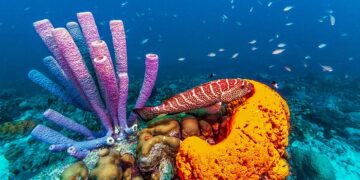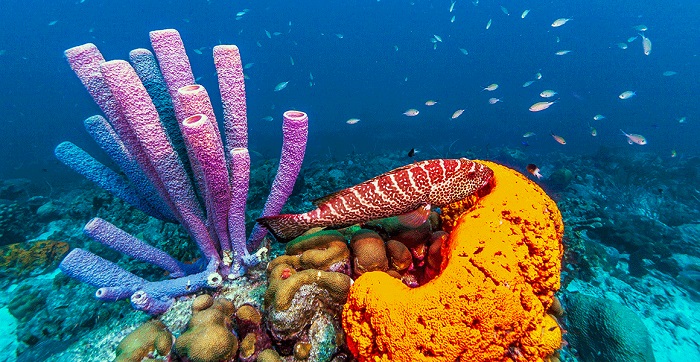In the vast expanse of the ocean, where vibrant coral reefs and majestic sea creatures often steal the spotlight, sea sponges quietly perform their ancient roles as nature’s architects. These seemingly simple organisms, classified under the phylum Porifera, hold remarkable secrets about marine life, from their feeding habits to their methods of movement and reproduction. Though they may appear unremarkable at first glance, sea sponges are fascinating entities with much to offer.
The Intriguing Structure and Sensory Adaptations
Sponges in the sea are among the most primitive of animals, with a lineage extending over 600 million years. Their structure is deceptively simple, consisting of a porous body without true tissues or organs. Despite this simplicity, sea sponges exhibit remarkable adaptations to their environment. One of the most intriguing aspects is their method of “seeing” their surroundings. Unlike other organisms, sponges do not possess eyes or a nervous system. Instead, they rely on specialized cells and chemical signals to respond to environmental changes. These cells can detect alterations in light, water flow, and the presence of various chemicals, allowing sponges to adapt and thrive in their habitats.
Feeding: Nature’s Filtration System
Ocean sea Sponges from the ocean are primarily filter feeders, a feeding strategy that distinguishes them from many other marine organisms. Their bodies are lined with thousands of tiny pores called ostia, through which water flows. Specialized cells, known as choanocytes or collar cells, line the internal chambers of the sponge. These cells have a collar of microvilli that traps and consumes microscopic particles such as plankton, bacteria, and detritus. As water is drawn through the sponge’s porous structure, these nutrients are captured and ingested, while the filtered water exits through larger openings called oscula. This filtration process not only sustains the sponge but also plays a vital role in maintaining water quality in marine ecosystems.
Movement: The Art of Staying Put
Contrary to what one might expect from an animal, sea sponges do not move in the conventional sense. They are sessile creatures, meaning they remain anchored to a single spot for their entire lives. However, this does not mean they are entirely immobile. Sponges can respond to changes in their environment by adjusting the flow of water through their bodies. This adaptation allows them to optimize feeding and waste removal processes. In some cases, sponges can even rearrange their internal structure to enhance their filtering efficiency or to protect themselves from adverse conditions.
Reproduction: A Dual Approach to Life
Sea sponges exhibit a fascinating dual approach to reproduction, combining both asexual and sexual methods.
Asexual Reproduction: Sea sponges can reproduce asexually through budding or fragmentation. In budding, a new sponge develops as an outgrowth from the parent sponge and eventually detaches to become an independent organism. Fragmentation involves the breaking off of a part of the sponge, which can then grow into a new sponge. This method of reproduction ensures that sponges can proliferate even in challenging conditions.
Sexual Reproduction: In addition to asexual methods, sea sponges in the ocean also reproduce sexually. They are generally hermaphroditic, meaning a single sponge can produce both eggs and sperm. Sperm is released into the water and captured by another sponge of the same species. Fertilization occurs internally, and the resulting larvae are released into the water column. These larvae are free-swimming and disperse to new locations before settling down and developing into adult sponges. This method ensures genetic diversity and adaptation to various environmental conditions.
Conclusion: The Quiet Marvels of the Deep
Sea sponges, with their ancient origins and unique biological systems, are essential yet often underappreciated members of the marine world. Their remarkable filtration abilities contribute to the health of marine ecosystems, while their reproductive strategies ensure their survival across diverse environments. Understanding sea sponges enhances our appreciation of the complexity and resilience of life beneath the waves. As we continue to explore and study these oceanic marvels, we uncover more about the delicate balance of marine ecosystems and the extraordinary adaptations that allow these silent architects to thrive in the ever-changing ocean depths.
























